
views
X
Research source
To prevent this damage, you'll have to "overwinter" your plants, which is a term used for cold weather protection measures. You can overwinter your tropical plants by continuing their growth phase indoors, allowing them to hibernate, or by using overwintered bulbs, tubers, and corms to regrow plants.
Continuing the Growth Phase Indoors

Watch the weather as summer comes to a close. The weather can sometimes change quickly and unpredictably. Because a sudden drop in temperature or unexpected frost can kill your tropical plants, you should keep a careful eye on the weather during the transition from summer to winter. A good rule of thumb is to begin preparing to bring plants indoors when the temperature reaches around 50 to 60°F (10 to 15.6°C). To prevent unexpected plant death, you may want to research the tropical plants you wish to save. This way you'll be certain of the lower range of their temperature resistance.

Choose a location to overwinter your plants. Most tropical plants need high heat, bright light, and high humidity to continue growing and stay alive. A bright, sunny, well heated room or a garden window can be an ideal place for this purpose. Putting your plant in this kind of location will trick it into thinking it's still in its growing season. This will keep the plant alive and active during the winter months. The ideal light and humidity for many tropical plants may be more than your home can provide. In many cases, decreased growth indoors is common. Many tropical plants grow to quite large sizes. In this situation, you may not have room in your home to store your plants. If possible, try to mimic the temperature and conditions of the region where your plant naturally grows. Find the average temperature and humidity of that region in the winter, and copy it as best as you can in your home.
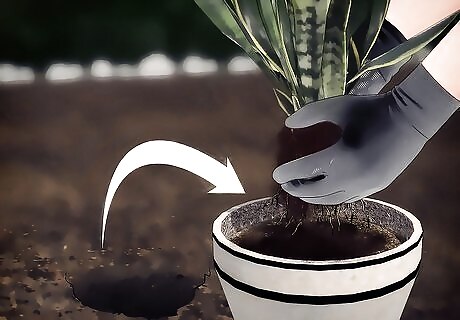
Transplant plants to pots, if necessary. Water the plant well one to two days before transplanting. Use a shovel and dig a wide circle around the tropical plants you are going to put in pots. After that, carefully dig toward and then underneath the roots of the plant until the roots come free with enough dirt attached to keep all roots covered. Put the plant in a pot and add a suitable nutrient rich filler, like compost, to complete the transplanting. For best results, you should transplant most plants in the evening, while nighttime temperatures are still in the 50°F (10°C) range. Generally, you should lightly water your plants after transplanting. This helps reduce the negative effects of this activity. You should inspect your plants well for insects before bringing them inside. Failing to do can result in your house becoming infested with bugs. You can always shave excess dirt off a root ball with your shovel, but it will be impossible to reattach a severed root. Err on the side of caution when digging.
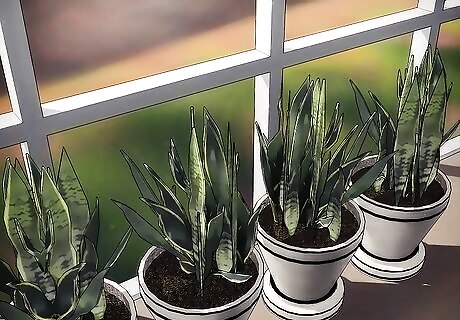
Transport your plants to your indoor location. Depending on where you'll be keeping your plants, you may want to lay down towels or a drop cloth in the storage location first. Dirt can stick to the bottom of pots or spill from them, creating a mess. A drop cloth will help prevent this while you arrange your plants. You can remove your drop cloth once you are certain your plants are clean and the dirt properly contained. You may want to leave a drop cloth, a mat, or a similar kind of holder beneath your pots. In some cases, excess water may leak out of the pot and dirty your home.
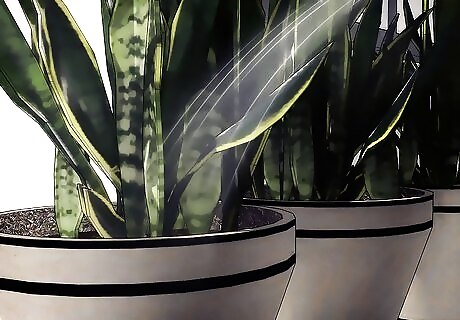
Care for your plants while overwintering. Your plants will still need water, light, and other nutrients, like fertilizer, while overwintering. The frequency of watering and feeding, however, will depend on the kind of tropical plant. Generally, you should: Keep the soil of your plants moist, but not wet. Over watering can lead to harmful conditions, like root rot. Care for your plants according to a consistent schedule. Failing to do so can "shock" the plant, resulting in brittle, unhealthy, or dead foliage. Keep your plant in the same location. Moving your plant frequently throughout your house is harmful to its health. Prune off dead or unhealthy parts of the plant. Removing the struggling parts of a plant will encourage healthy growth elsewhere.
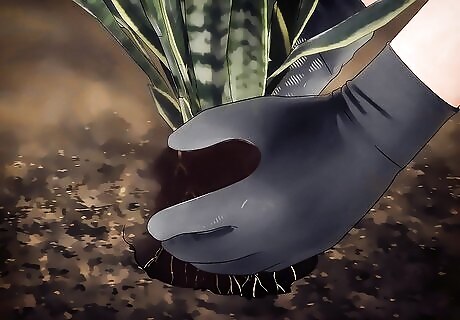
Move your plants outdoors when the weather is suitable. When the weather is warm enough for your tropical plants, take them outdoors. Try to keep the plants in their pots so that you can easily move them back indoors next winter. It is generally not a good idea to transplant a tropical plant back into the ground, as you will need to remove it again next winter.
Hibernating Plants
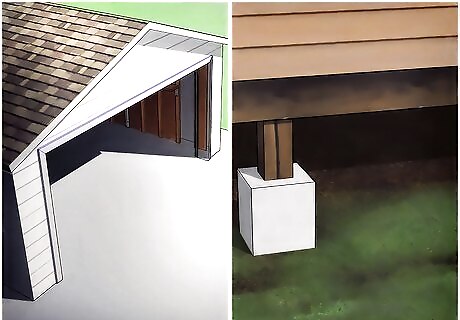
Choose a suitable location. When hibernating plants, you'll want a cool place that is completely dark and stays above freezing throughout the night. Ideally, the temperature of your hibernating location should range from 40 to 50°F (4.4 to 10°C). Some places you might want to consider include: Crawl spaces Garages Outbuildings (like sheds, barns, etc.) Unheated/unfinished basements
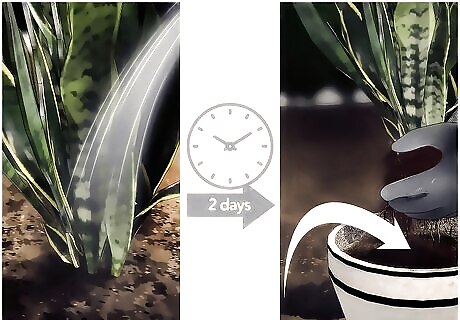
Pot plants, if necessary. Plants in the ground should be doused with water a day or two before they are dug up with a shovel. After digging up the plant, the roots should be fully intact and there should be enough dirt on the root ball to keep them covered. Put the plant in a pot and fill in any empty spaces with nutrient rich filler, like compost. Generally, you should transplant your tropicals in the evening and lightly water them following transplanting.
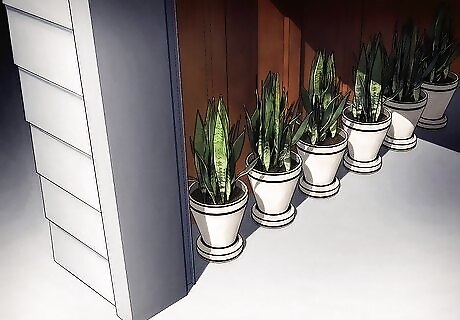
Move plants to the hibernating location. If you have to walk through a nicer part of your house to get to the plant hibernating area, you may want to lay down towels, newspaper, or a drop cloth to prevent the spread of dirt. After that, take your plants to the storage location. Plants that are already potted can be moved directly to their hibernating location. However, you may want to clean these off, first. You may want to have a permanent cover, like a plastic mat, to catch any loose dirt or decayed plant matter and keep your hibernating location clean.

Check your plants while they are hibernating. Sudden drops in temperature can influence the temperature of your hibernating location, too. In the event of a drop in temperature, you may need to relocate your plants somewhere warmer. The soil should remain slightly moist throughout overwintering. Add water sparingly as necessary. If you have tight space constraints, you may want to lightly prune away large limbs or growths. In most cases, though, heavy pruning should be saved for spring.
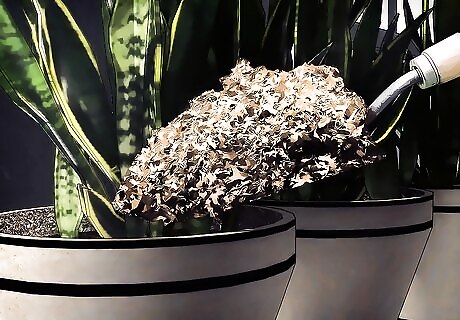
Retain heat with mulch or ground cover. Many tropical plants will be too sensitive to survive winter weather, but some more resilient plants may be able to survive mild winters with a little help. Ground cover, like a thick layer of mulch that completely hides the plant, helps keep roots warm and alive. You might also: Use a frost cover, which are available at most home and garden stores. This is essentially a piece of fabric used to completely cover and protect plants from cold damage. Even an old blanket, carefully wrapped around a plant, can work as a frost cover. Be careful your cover doesn't crush the plant. Build or purchase a cold frame or hoophouse for your plants. These are simple structures that permit good light while keeping frost at bay.
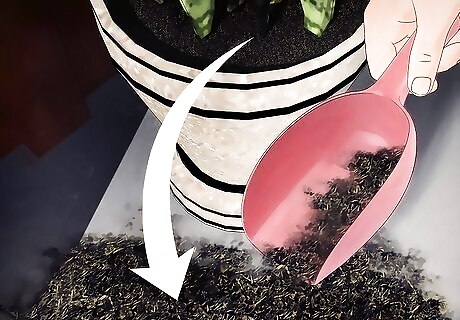
Remove mulch and allow your plants to regrow. When the weather returns to suitable conditions for your covered, hibernating plants, use a shovel, rake, or hand spade to remove the mulch. Be especially careful not to damage the roots. To give your plants the best chance of growing back, you may want to use fertilizer. Be sure you water the plants adequately, so they have enough nutrients for the spring re-growth phase. When waiting for your plants to come out of hibernation and regrow, try to be patient. Some plants may take up to two months to start regrowing.
Using Bulbs, Tubers, and Corms to Regrow Plants

Identify plants that can be replanted. Many kinds of tropical plant produce special structures, called bulbs, tubers, and corms, from which the plant can be regrown. These are generally found in the ground or at the base of the stem. Common tropicals that produce these kind of structures include: Elephant ear Cannas Caladium
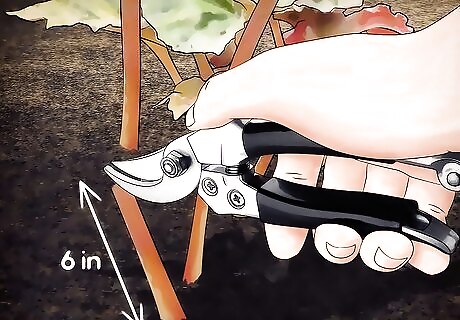
Wait until the first light frost. This is the ideal time to harvest regrowing material. After the first light frost, the leaves of your plants should be slightly brown. This shows that the plant has entered its dormant phase. At this point, you should: Use garden shears or a spade to cut stems to approximately 6" (15.2 cm) long. Then, carefully dig up the plant. Gather all tubers, bulbs, and corms. These are generally bulbous growths at the base of the stem.

Overwinter your regrowing material. There are many techniques you might use for storing bulbs, tubers, and corms. In most cases, you should wash excess soil from the regrowing material with warm water and allow it to air dry. Then: Spread out regrowing material in containers with good ventilation, like milk or bread crates. Keep material separate and pack it with peat moss, wood chips, or sawdust. Store your packed crates in a cool, dark place with a temperature that is consistently 40 to 50°F (4.4 to 10°C). Every month, check your regrowing material. Remove and throw away rotten plant matter, and rejuvenate shriveled matter with a light mist of water.
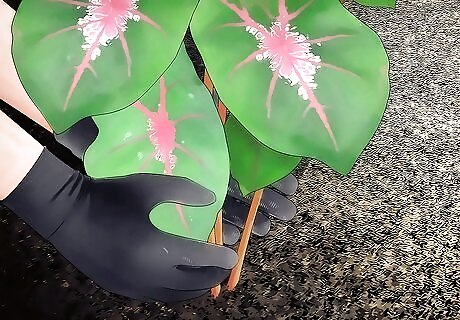
Plant your tropical plants when summer arrives. The ideal planting condition will depend on the kind of tropical plant you are growing. Generally, regrowing material should be planted in holes as wide as the plant matter and 2 to 3" (5.1 to 7.6 cm) deep. After planting, you'll have to care for your plant according to its needs. This may involve things like regular pruning, watering, and fertilizing. Some of your regrowing material may not sprout. It's not uncommon for a few plants to fail.
















Comments
0 comment